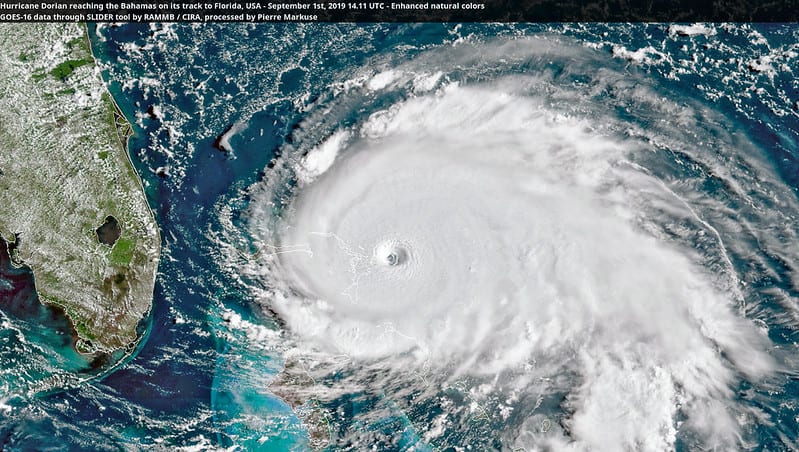The New Reality: Don’t Ignore the Black Swan Events
It is human nature to avoid spending money on preparations for an event that may never happen. However, as we all continue to adapt to a COVID-19 world, there is a new awareness of low probability, high impact events. If the consequences of a statistically unlikely event are devastating to the economy, the survival of an industry, or welfare of our communities and businesses, is this a gamble we are still willing to take?
Popularized by former Wall Street trader Nassim Nicholas Taleb, a “black swan” event is a metaphor for an improbable event with serious consequences. The COVID-19 pandemic is such an event, as is a ransomware cyberattack or a severe weather event like a derecho. There is no time to prepare once these events occur.
COMMENTARY
Take cyberattacks as an example: the reality is that the U.S. electric grid is more vulnerable to cyberattacks due to exposure from the Industrial Internet of Things (IoT) and workers’ online behavior. The U.S. Government Accountability Office reports that the U.S. Department of Homeland Security has been issuing growing numbers of industrial control system vulnerability advisories between 2010 to 2018—an increase of 13 times— and these are just the ones we know about. As a result, industrial cybersecurity is a growing market with much investment. Still, only 7% of IoT users have adequate cybersecurity measures in place, according to the Irdeto Global Connected Industries Cybersecurity Survey. Will it take the ultimate black swan event for the industry to react across the board? Imagine the devastating effects of a country-wide blackout.

After the reality of COVID-19, critical infrastructure needs to plan now to guard against possible, not just probable, events.
COVID-19 has been a wake-up call for many industries. It is creating a new reality in which business leaders are no longer willing or able to delay preparing for such crisis events. A little bit of prevention can go a long way in reducing irreversible consequences. Now is the time to prepare for the inevitable grid outage to ensure business continuity.
Risk Planning
Facilities should look at two aspects when it comes to grid-related business continuity planning: power outage likelihood and severity of impact.
Outage likelihood. When evaluating the likelihood of a power outage, it’s a question of when and not if. When it comes to the electrical grid, we already face a multitude of “grey swan” events including natural disasters. Grey swan events are more likely and can also severely impact operations.

According to the National Oceanic and Atmospheric Administration (NOAA), in 2019 there were 14 climate and weather events resulting in more than $1 billion in loss. Climate Central reports that major power outages have grown 10x between the mid-1980s and 2012.
Consider your geographic area. We have earthquakes on the West Coast, ice storms in the North, hurricanes along the Gulf Coast, and tornadoes in the central states. The Southwest is prone to unexpected pop-up storms that can quickly become severe. For example, in June 2019 an unexpected tornado suddenly hit Dallas after a relatively clear morning, knocking out power for days to a wide area.
Outage impact. As an industry, we must be able to answer the question: What happens when we lose power? What happens to operations in terms of financial loss, impact to production, health and safety of workers and customers, and our reputation? Can we quantify it? What is the duration tolerance? If the outage is days or weeks in length, do we have a contingency plan in place?
Most industries suffer dire consequences from long-term power outages. A gas midstream company has a specific timeline after an outage of when to shut down different compressor stations along a pipeline to prevent exceeding maximum operating pressure. Restarting and stabilizing the system could take days.
If a chemical company experiences a power outage of more than 40 minutes, its production equipment would become gummy and take days to clean while also risking an environmental hazard. Hospitals must evacuate patients, manufacturers must dispose of defective product, and pumping plants can’t produce drinking water. Businesses can also experience reputational risks, such as when a data center goes down and unhappy customers have service failures because the business cannot provide online services. Businesses that experience severe consequences from power outages should be looking at how to crisis-proof their operations.
Now, imagine the impact of two grey swan events happening simultaneously, along with a black swan event. Think California wildfires, a hurricane in Texas, and a COVID-19 relapse. This is our new reality, and it has arrived.
Resilient Mission-Critical Support
If there is one thing that we have all learned from recent events, it is that we can’t afford to remain unprepared for an unlikely but high-consequence future. The good news is there are strategies that lessen the impact of crisis events. When it comes to power outage defense, microgrids present large power users with a unique opportunity, offering a highly reliable, cost-effective and safe option independent of an aging and weather-vulnerable utility power infrastructure.
Modular, low-cost microgrids can provide long-duration resiliency while integrating renewables and natural gas—more affordable and cleaner than using diesel. Modular microgrids are not only able to island from the grid and operate autonomously, but also include standardized hardware components, and the ability to tailor operations through software and streamline deployment by reducing the need for onsite engineering during installation.
On a wider scale, resiliency microgrids offer regulated and unregulated energy providers new approaches to remain competitive and meet high customer expectations. Energy provider-enabled resiliency microgrids are an innovative way to deliver continuous power to large customers while also providing quick response capacity and energy to the grid.
Few microgrids are exactly alike and customers can be intimidated by the financial, maintenance, and technology aspects of employment. By working closely with customers, Enchanted Rock has been able to show that employing a microgrid is less complex and more affordable than they think.
In fact, so many commercial and industrial (C&I) customers are adopting microgrids that North America is leading the market. That’s why 81% of global customers choose to use microgrids through a service partner business model, according to Navigant Consulting as of 2Q2019. Enchanted Rock adds a twist to its business model to help reduce out-of-pocket cost to clients by monetizing the microgrid through grid services and selling excess energy back to the grid when it is most valuable.
In summary, industries will undoubtedly emerge from COVID-19 with an acute awareness of the need for contingency planning. Crisis-proofing should be a priority, even for what appear to be low-probability events. While some may view this planning as premature, companies must consider the potentially catastrophic impacts that can be avoided with preparation. Preparation now can make companies much more resilient in the face of future grey and black swan events.
—Allan Schurr is chief commercial officer of Enchanted Rock, LLC, a Houston, Texas-based provider of backup power generation solutions. He has served on the board and participated as a speaker at POWER’s Distributed Energy Conference.